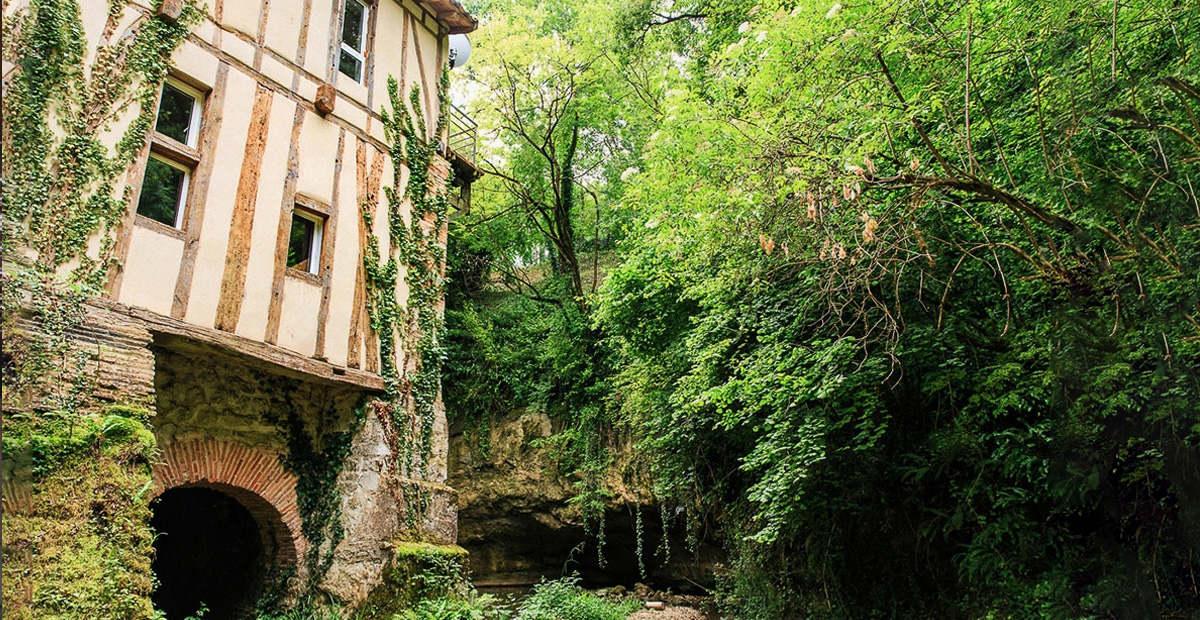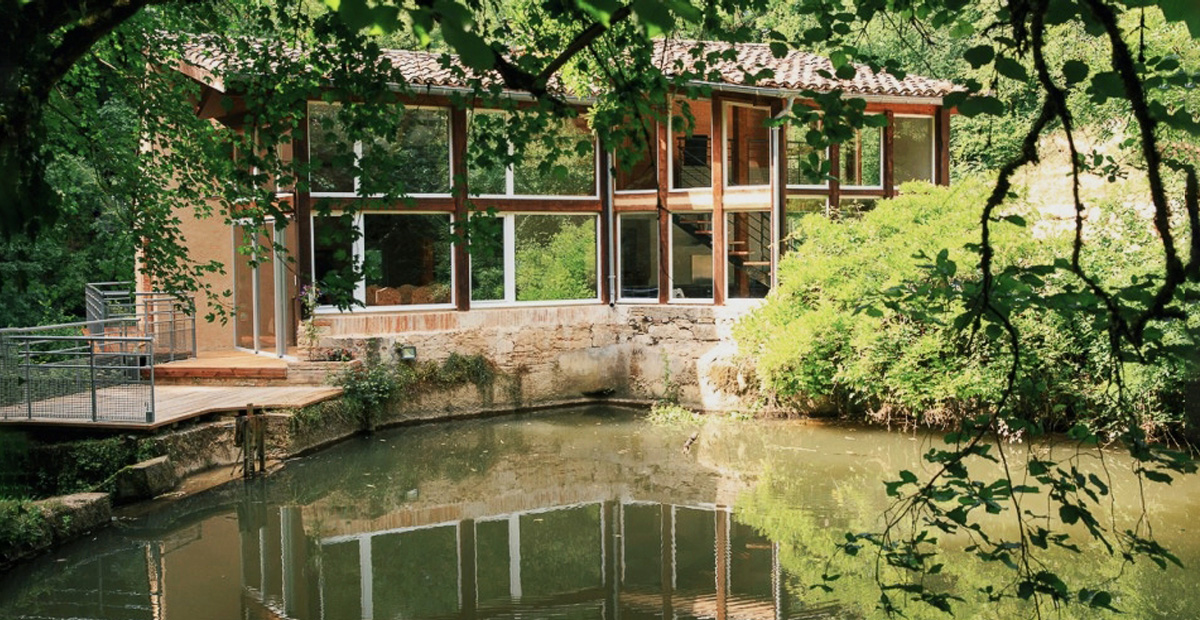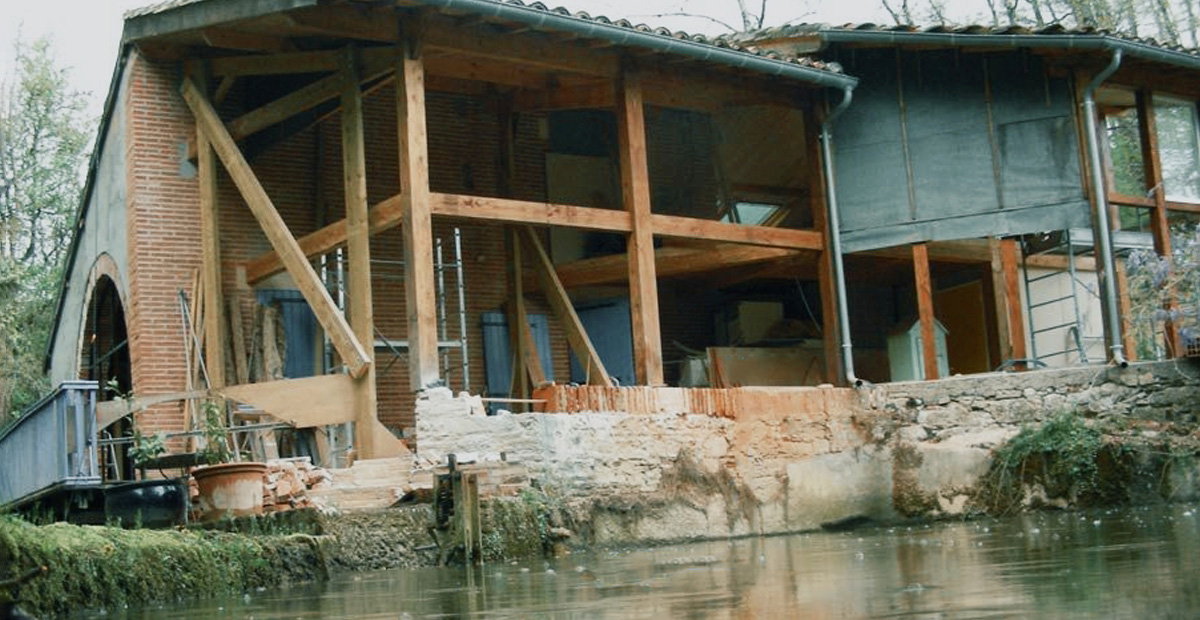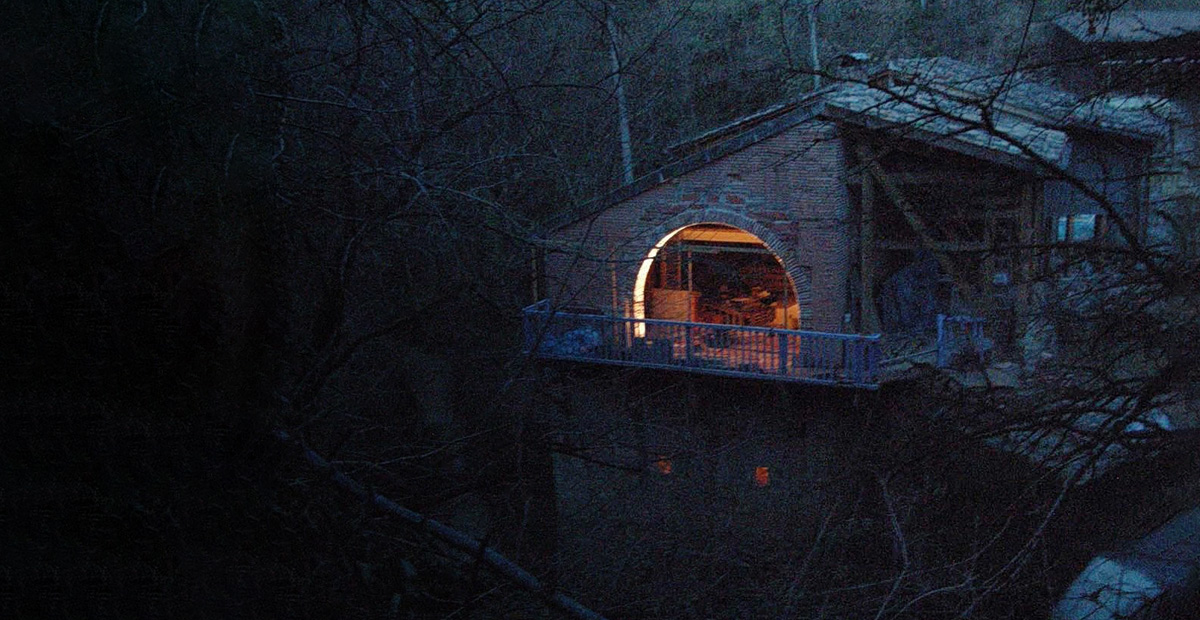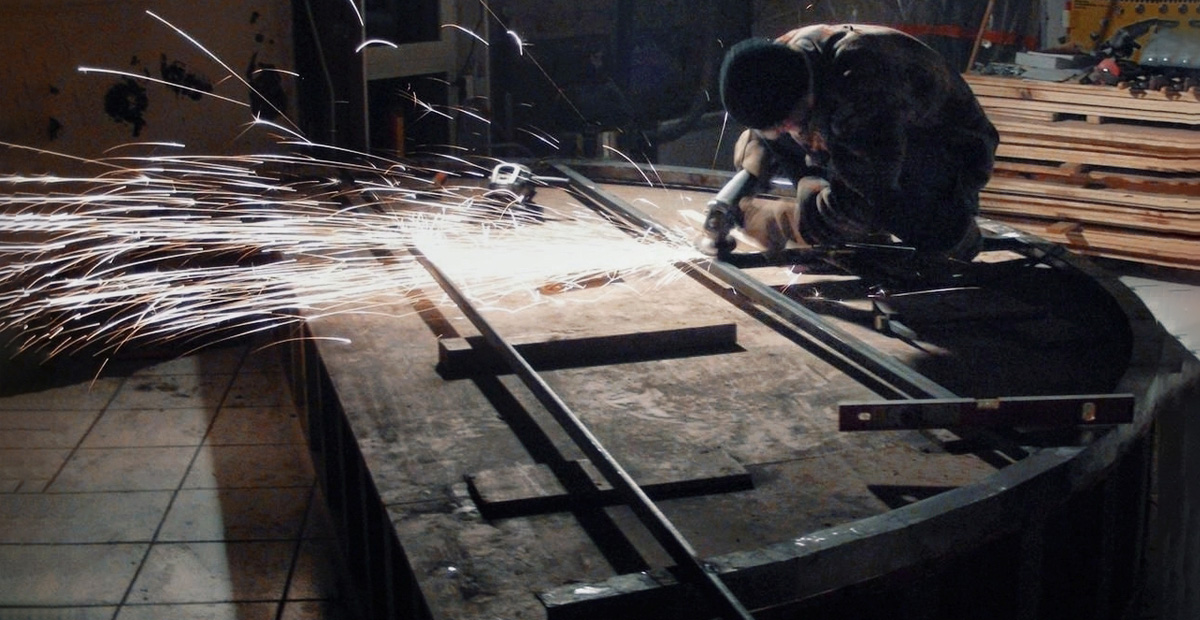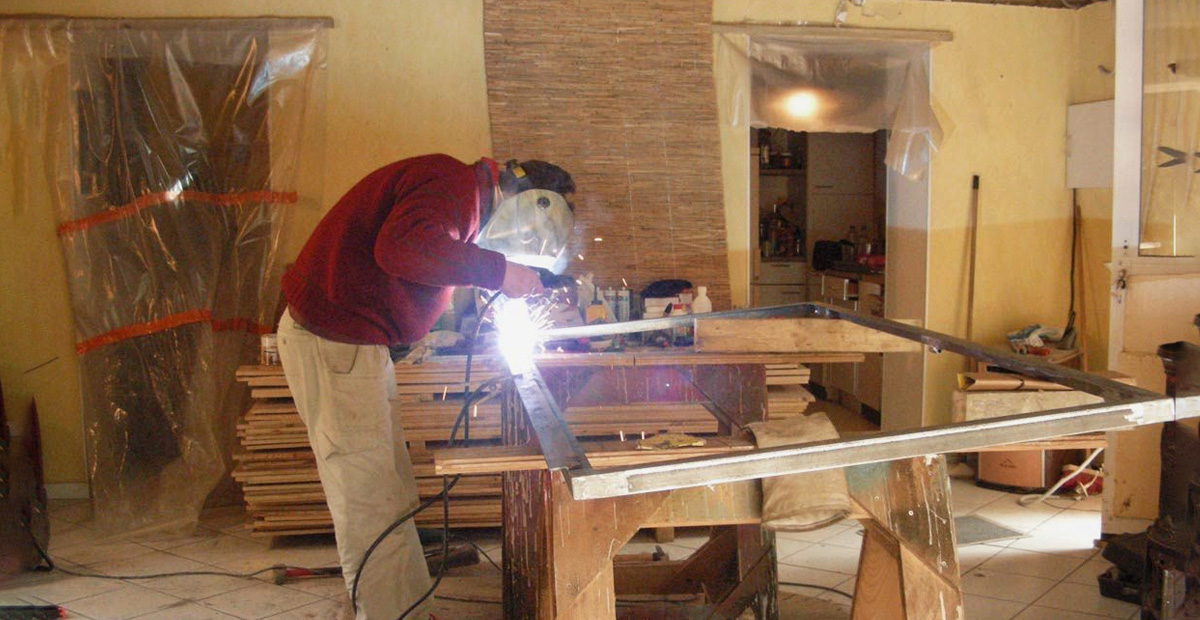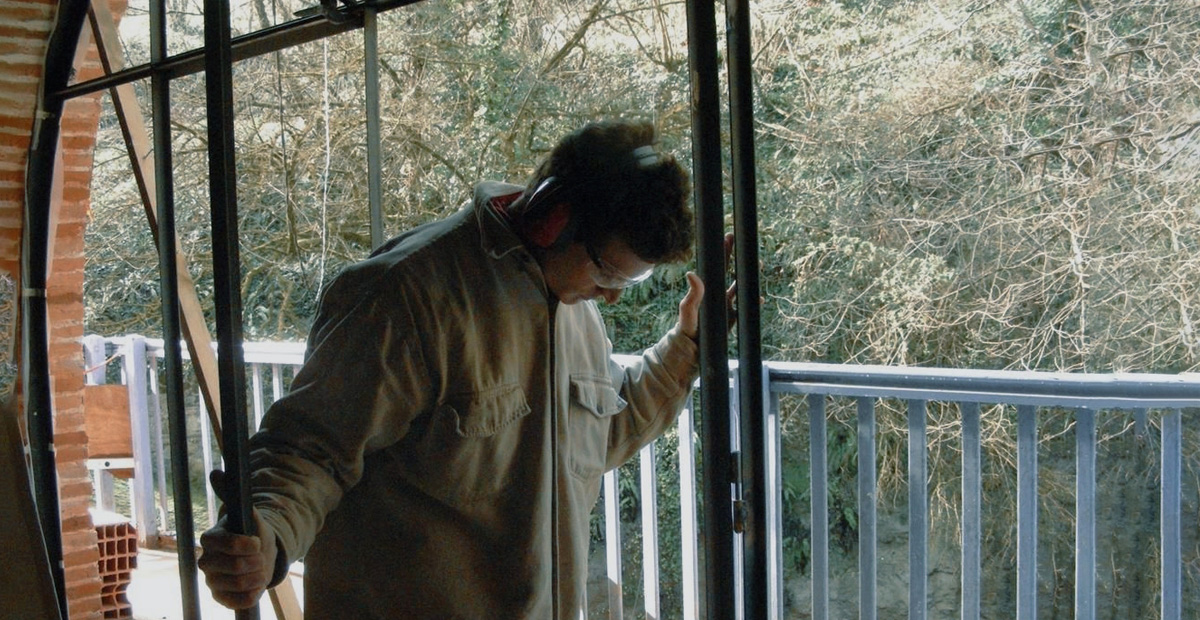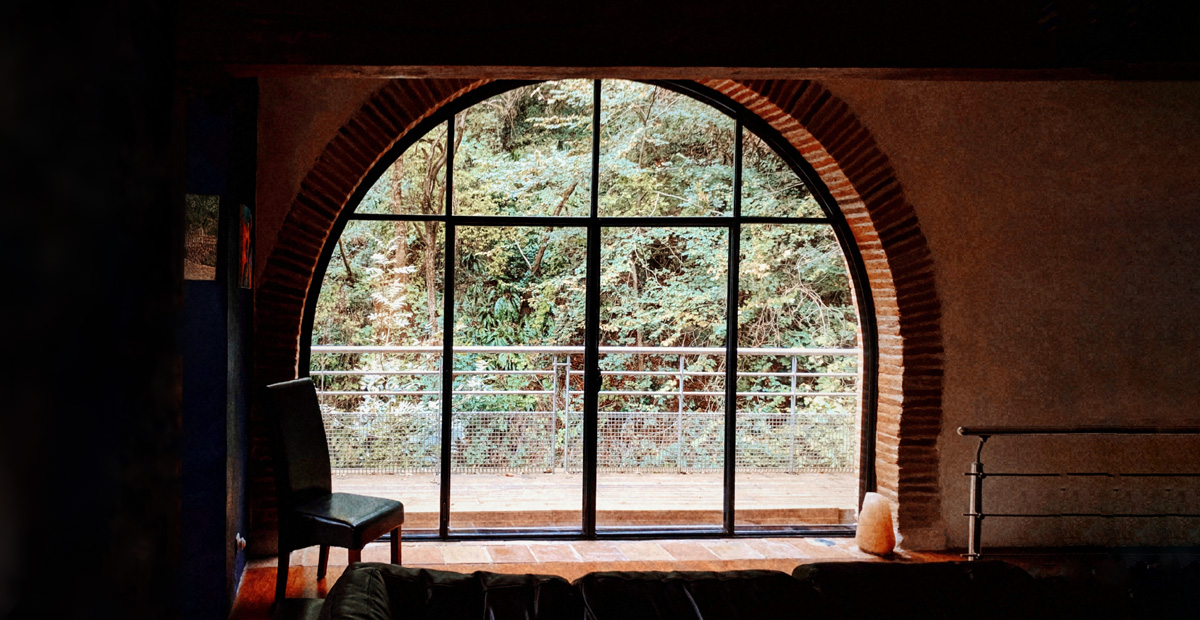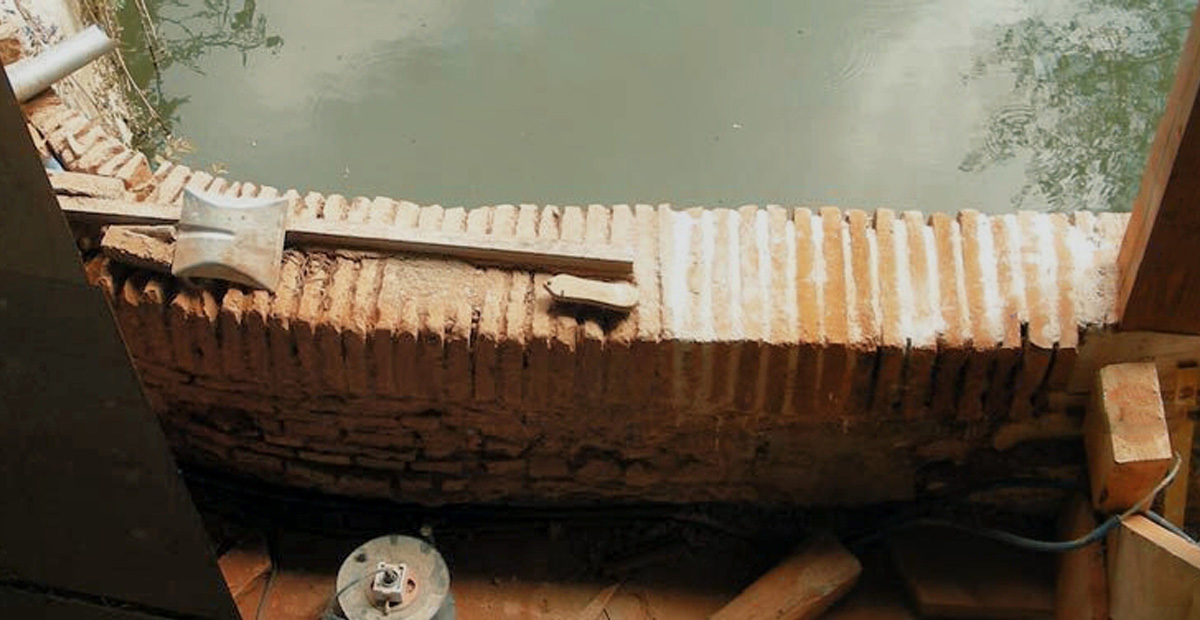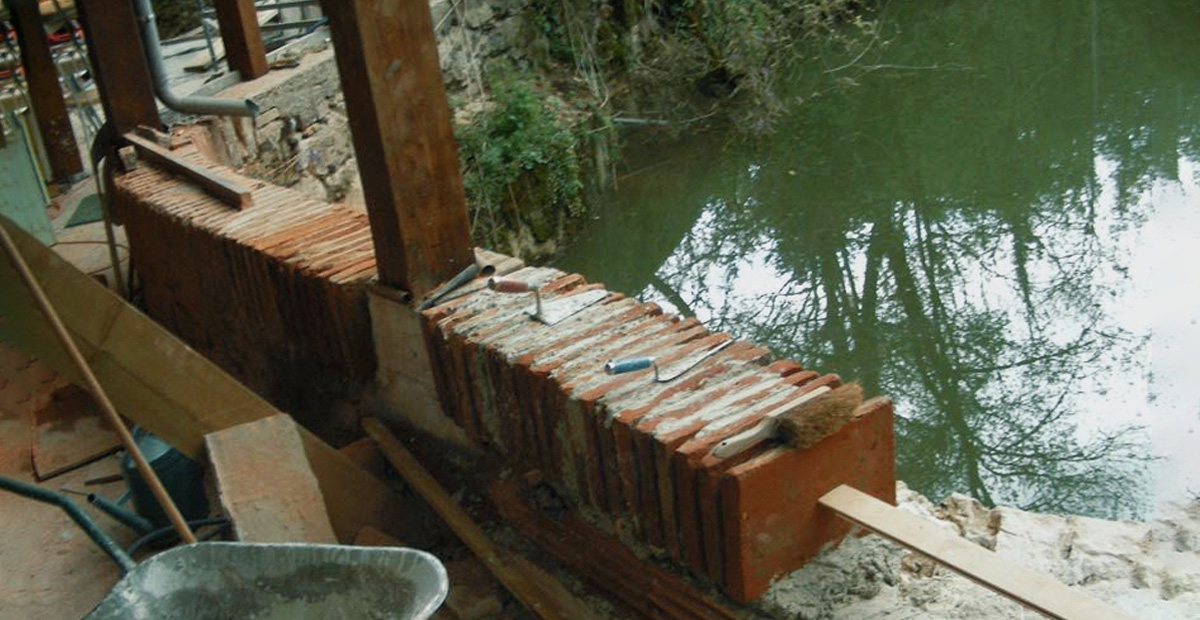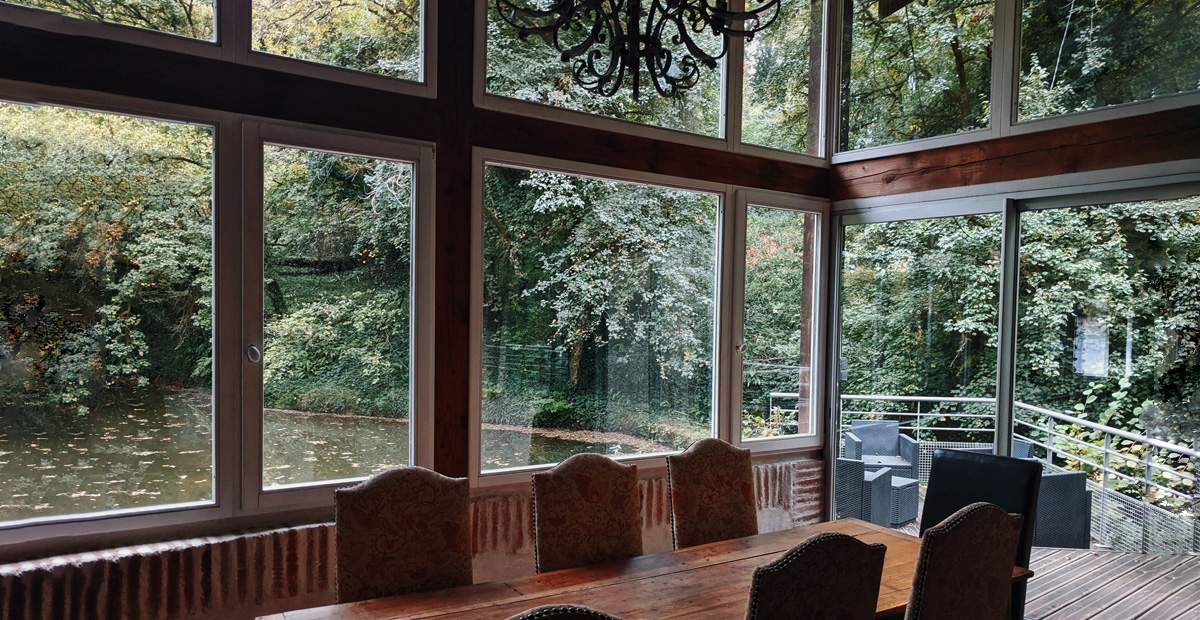After honing my skills with a family owned timber framing business I undertook a major restoration/extension project with their backing.
This is an old watermill that was in continuous use throughout medieval times all the way up until the 1900’s. It then was partially converted into a home by a previous owner, with a lack of appreciation for historical context and authenticity. The first step was to upgrade the entire roof and extend it on the North-East. The new framing was custom made on site from oversized Douglas fur post and beams with classic mortise and tenon joinery. The old oak framing was preserved and restored. The goal was to mirror the “colombage” aesthetic while transforming the space into passive solar, with the East façade entirely glazed for the low winter sun to heat the massive western walls being used for their thermal mass. The interior livable volume increased two fold by the end of the project. The original East wall was removed to unite the two big volumes on the ground floor into one large volume open to the North mezzanine. The watermill being built on a natural 20 ft cliff, the floors were -1 and -2. -2 was home to ancient heavy steel water wheels and outflow, and -1 was the grinding wheels level. It was converted into a large room with view on the west.
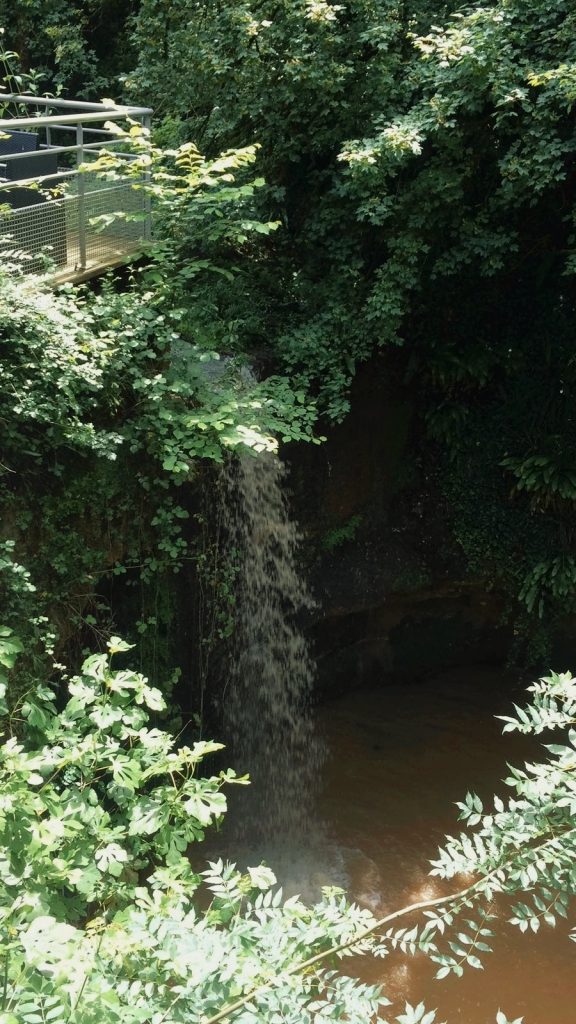
South of the house, the water overflow dropping 22 feet into a naturally carved basin. The watermill had been ingenuously located in antiquity on a pre-existing geological feature that made it possible to build a stout 12 feet wide wall and triple the volume of the upper water basin, providing the mill with vast amounts of hydro-power.


